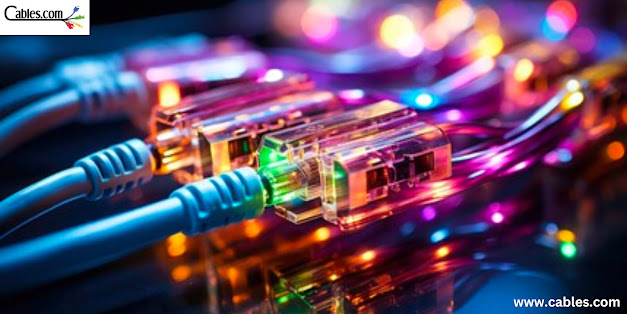Common Networking Patch Cable Problems and How to Troubleshoot Them
In today's hyperconnected world, where our professional and personal lives rely heavily on the internet, Networking Patch Cables are the unsung heroes that keep us connected. These cables transmit data across local area networks (LANs) and connect us to the vast virtual realm of the internet. However, like any technology, networking patch cables can encounter problems, disrupting our online activities and productivity. In this blog, we will explore some common networking patch cable problems and provide troubleshooting tips to get you back online swiftly.
Cable Fraying or Physical Damage
One of the most prevalent issues with networking patch cables is physical damage. Over time, cables can become frayed, bent, or damaged due to wear and tear or accidents. When this happens, it can lead to connectivity problems or even complete network failure.
Troubleshooting: To address this problem, first inspect the cable visually. Look for any visible signs of damage, such as exposed wires or bent connectors. If you find damage, the best solution is to replace the cable with a new one. Prevention is also key: use cable management techniques to minimize stress on cables, and invest in quality cables that are less prone to wear and tear.
Intermittent Connectivity
Intermittent connectivity issues can be incredibly frustrating. These problems manifest as periodic dropouts or slow data transfer rates. They are often caused by loose connections or interference.
Troubleshooting: Start by checking the cable connections at both ends. Ensure they are securely plugged in. If you notice any loose connections, firmly reseat the cable. Additionally, keep networking patch cables away from sources of interference, such as power cables or electronic devices. Re-routing the cable to avoid these sources can often resolve intermittent connectivity problems.
Cable Length Issues
The length of your networking patch cable matters. Using a cable that's too long or too short for the job can result in poor signal quality and unreliable network performance.
Troubleshooting: Ensure you are using the appropriate cable length for your setup. For short distances, a standard patch cable will suffice, while longer runs may require specialized longer cables or signal boosters. Replacing the cable with the correct length will help resolve this issue.
Crossed Wires (Incorrect Wiring)
Crossed wires can occur during cable installation or when making your own patch cables. When wires are connected to the wrong pins at either end of the cable, it disrupts the signal flow.
Troubleshooting: To troubleshoot crossed wires, inspect the cable connections carefully, ensuring each wire corresponds to the correct pin on both ends. To prevent this issue when making your own cables, follow a wiring diagram or use a cable tester to verify the connections.
Jacket Damage
The outer jacket of a networking patch cable provides protection to the inner wires. If this jacket is damaged, it can expose the inner wires to potential harm and compromise the cable's performance.
Troubleshooting: Regularly inspect the jacket for any cuts, nicks, or other forms of damage. If you find any, it's best to replace the cable to prevent further deterioration and signal loss.
Incompatible Cables
Not all networking patch cables are created equal. Using cables that are incompatible with your network equipment or speed requirements can result in connectivity issues.
Troubleshooting: Ensure that you are using the right type of cable for your network. For example, if you have a gigabit network, use Cat5e or Cat6 cables designed for higher data speeds. Reading equipment specifications and consulting with IT professionals can help you determine the appropriate cable type for your setup.
Daisy-Chaining Cables
Sometimes, users attempt to extend cable length by connecting multiple patch cables together, which can lead to signal loss and connectivity problems.
Troubleshooting: Avoid daisy-chaining cables whenever possible. Instead, use a single, appropriately sized cable for your network setup. If you must extend a cable, consider using a dedicated coupler or a network switch to maintain signal integrity.
Conclusion
Networking patch cables are the backbone of our digital world, ensuring that data flows seamlessly from one device to another. However, like any technology, they can encounter problems that disrupt our connectivity. By understanding and troubleshooting common networking patch cable issues, you can minimize downtime and maintain a reliable network connection. Remember to invest in quality cables, regularly inspect and maintain them, and follow best practices to ensure trouble-free networking. A little proactive effort can go a long way in keeping you connected in our interconnected world. Always buy from a trusted seller like Datacomm Cables.




Comments
Post a Comment